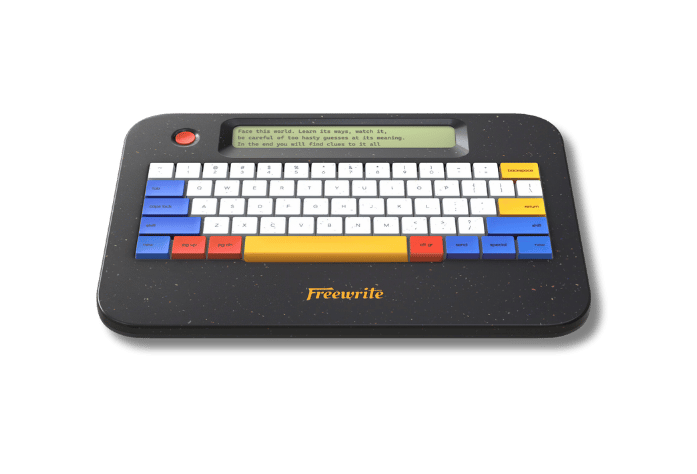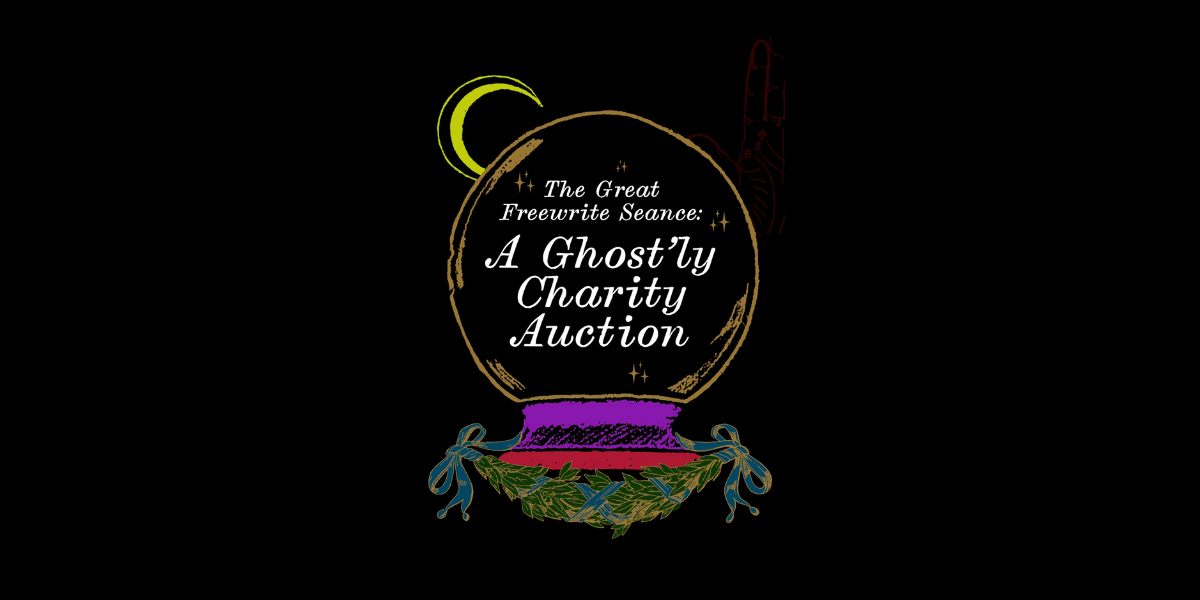Photo by Josh Nezon on Unsplash
Today’s guest post is by Corinne Lincoln-Pinheiro. Corinne is a journalist with experience as a freelance legal digital reporter, military journalist, city junior newspaper editor and health blogger. She is a military spouse blogger and also writes about military-family travel. Corinne is also a published creative nonfiction writer and poet.
Finally, you’re ready to take the plunge into the travel writing sphere. Now what? What types of travel writing are right for you? Well, whether you’re a novice or seasoned writer searching for something new, there are multiple avenues from which to turn an aspiration into a part-time gig or full-time career.
Modern travel writing appears in many forums, from travel blogs and websites, in-flight travel magazines, trade magazines, newspapers, free periodicals, books and more. But before all that comes the decision as to which one(s) suits you best.
The Travel Writer’s Guide
Of course, deciding on what’s a good fit depends on your interests and expertise. Because many travel writing categories overlap and have similar templates and requirements, you can do more than one type of writing simultaneously. You should ask yourself: how much time do I want to devote to research, how many articles can I produce a week, and how far am I willing to travel and how often? Am I drawn to travel journalism? Whether this venture is a stepping stone to something else, supplement income, or a new career altogether, travel writing is competitive and writers are typically poorly compensated.
The best travel writers are unique and bring a fresh perspective. Being able to pitch great ideas, following through, and having something interesting to say is indispensable. Whatever you do, be authentic, candid, and creative in your approach.
I once pitched a two-week travel extravaganza (from Forks, Washington State to Eugene, Oregon), and wrote more than 20 pieces about (sometimes little known) attractions along the West Coast. The travel series on gems near Highway 101, ran both online and in print.
Creativity is one thing but you must have your readers’ interest at heart. After an all-expenses-paid trip to the South, I didn’t give outstanding reviews to all of the attractions (unlike the travel bloggers in attendance). But my audience—primarily military families, often had to take vacations on a budget, if they took one at all, and they appreciated the advice about attractions that weren’t worth the price.
This guide will provide a brief overview of 18 types of travel writing options to help you narrow down which one(s) you’d like to pursue.
Types of Travel Writing:
1. Weekend Warrior
2. Content and Social Media Marketing
3. Roundups and "Best of" Lists
4. Holidays and Special Events
5. Side Trips
6. Destination Pieces
7. Travel and Lifestyle Blogging
8. How-To Travel Guides
9. Advice Articles
10. Travel Itineraries
11. Food and Travel
12. Guidebooks
13. Travel Humor
14. Personal Travel Essays
15. Travel Memoirs
16. Travel Modes
17. News Travel
18. Travel Op-Eds
1. Weekend Warrior
Are you one of those people who gravitate toward articles about the perfect day trip? Local or regional attractions are great for this type of piece. This is a mashup of a few ways to travel write—it can be an outdoor expedition, recreational indoor activity, weekend getaway, or a combination. It may focus on a fishing trip, bike or hiking trails, scenic road trips, or indoor rock climbing for example. It’s a destination piece with an element of adventure that gives the reader a glimpse of what they could be doing this weekend.
Travel writers should know the market, the publication and their vocabulary. Consider if the piece will be family-oriented, what are some interesting things to do outside of the must-see attractions, how to get the most out of the day or weekend, along with descriptions of the scenery and facts about the activity. Whether it's water sports, glamping or packaged adventures, if you live it, why not write about it? This can also be a version of roundups (see below) and may include additional specifics on a destination’s happy-hours specials, shopping, food, drink, the arts, and nightlife.
 Photo by Corinne Lincoln-Pinheiro
Photo by Corinne Lincoln-Pinheiro
2. Content and Social Media Marketing
Travel companies sometimes hire freelance content and social media writers to promote their product and services via blog posts, video clips, and articles. You’ll need to write quickly, vary the tone for targeted audiences and engage with followers and update posts. If you favor succinct tweets, Instagram blasts and Facebook blurbs, you’ll like this option.
Side note: As a travel writer, you should have a social media presence anyway. While you’re traveling, you can upload videos and pictures to promote the attractions and things to do at the destination. Also, during complimentary travel, businesses like the fact that you’re able to “bring along your followers to visit” their destinations and spread the word instantly.
Finally, most companies have social media pages and as more people turn to them for ideas, travel content and social media writers are in demand, especially if you employ SEO practices. There are even content marketing companies that hire travel writers specifically to research and write content for other businesses.
3. Roundups and "Best of" Lists
Very popular these days, roundups are bullet-point lists that collect information on different destinations with a common theme, like the “10 Best B&B’s in San Francisco.” It isn’t too in-depth and because it’s brief, the catch is finding ways to spice up descriptions and avoid clichés. The introductory paragraph setups the common thread/angle and bullet points justify why the destination made the list. Roundups should be accurate and well-researched to produce quality pieces (even better is visiting the destinations and providing original content).
If your roundups are in the same region (like the B&Bs in San Francisco) before you visit you can request complimentary accommodations. Better yet, contact local tourism agencies and they’ll help set up tours, press passes, create your itinerary and provide tour guides, on occasion. Roundups get a lot of online views and are easily scan for pertinent information (it helps build your portfolio, too).
4. Holidays and Special Events
A travel story involving holidays and special events such as New Year’s or Germany’s Oktoberfest should be pitched and planned well in advance. If you’re new to travel writing, you can start with local festivals and fairs. One lesson I learned early on as a journalist who also covered travel writing—these events can produce multiple pieces and can be a treasure-trove for new leads.
For example, the first piece can be a 200-word announcement of the event. Closer to the occasion, an interview with an event official about last year’s successes and what to expect this year serves as a reminder. As you cover the event, talk to everyone. If you do multiple types of travel stories your next lead or resource could be around the corner.
 Photo by Corinne Lincoln-Pinheiro
Photo by Corinne Lincoln-Pinheiro
5. Side Trips
A side trip is a “side-step” on the way to or from (or nearby) a major destination. It focuses on another city or lesser known location or attraction. Magazines usually plan for and arrange side trips to complement the issue’s featured travel article. Pitching these ideas early on can help them plan around the issue. Side pieces detail how to get there, attractions details such as hours of operation, so readers can know what to expect when visiting.
Side trips are usually day-trips and travel writers maximize the benefits by also using these destinations (or information from them) in roundups or even weekend warrior angles.
6. Destinations Pieces
Destination pieces that are feature articles are usually very in-depth. It finds the right angle to draw the reader into the painting the travel writer creates and entices them to visit. Features can be seasonal but should always be relevant. Often, editors assign these to established writers or those they have a working history and familiarity with. Well organized pieces seamlessly integrate facts, anecdotes, historical information, encounters, storylines, and the “Five W’s” of who, what, when, where, and why (and sometimes how). The challenge remains, as with all popular attractions, finding a fresh way to retell something many others have done before.
It’s usually told in the first person and the voice is more of a delivery tool than the focus. Great travel writers avoid meaningless descriptions and write compelling articles that make the reader hungry for the next detail. Destinations can also highlight overlooked attractions and little-known gems.
7. Travel and Lifestyle Blogging
Travel blogging allows writers to set the tone and pace because there are no editors or deadlines or templates, just you and your readers. You can also be a guest contributor or invite guest bloggers to increase visibility. As for lifestyle blogging, it’s great for multiple ways of travel writing because you set the terms, here as well. However, it’s very competitive so the key is to build trust and rapport and be a credible resource for readers.
You can write longform posts, roundups, destinations, weekend warriors angles and itineraries, you name it. Itineraries can take the form of where to eat, stay, and play, whereas longform posts are more narrative in nature with characters and vivid details. Bloggers keep the reader’s attention by being witty, creative and engaging, even intimate; they are active (in life and online), giving readers repeated reasons to return.
8. How-To Guides
The how-to travel piece imparts invaluable advice and information, making travel writers a tour guide of sorts. You can help solve readers’ travel problems before they occur, and this alone will generate more shares if it's relatable and reliable.
A how-to can focus on just one aspect of travel like how to get around complex international airports for example. “How-to” travel advice is a frequently googled topic, such as, “How to travel on a budget.” Travel writers should be comfortable conducting thorough research and have knowledge of the destination, where applicable. Great how-to articles are honest and trustworthy and teach readers essential tips beyond what the attraction entails.
9. Travel Advice Articles
A how-to article can easily turn into an advice piece which discusses, for example, mishaps that can happen on a trip. Advice on overcoming language barriers, what to do if you have to deal with law enforcement, foods to avoid, what to do if you lose your luggage, scams, where to get discounts and bargains, what to do if you miss your flight or if you become lost, all of these are advice a reader may not know they need. Whatever you recommend, it must be well-researched and interviews with credible experts help reinforce the advice given. Editors often assign these pieces to staff writers and not freelancers.
How-to and advice travel articles can be in-depth standalone pieces, but often this information is incorporated in other pieces such as destination articles. Readers appreciate the one-stop “shopping,” especially if the advice is destination-specific and integral to the region. Many see this type of advice as essential to any travel piece.
10. Travel Itineraries
Itineraries are city-by-city, region, destination, or sight-by-sight recount of all the details from planning to returning home, so the traveler can use it as a stencil. There are recommendations on where to visit and how to maximize time and save money. It goes into greater detail about the challenges of visiting a specific location, drive times and routes, weather and road conditions, crowds and busy times, and what clothing and gear to pack.
Itineraries can be first-person accounts, relaying door-to-door experiences with a narrative thread that runs throughout.
11. Food and Travel
This is a prized gig for foodies—exploring diverse cuisines, cultures, and dishes, all the while visiting interesting places. This is a staple in the travel writing industry because there are evergreen opportunities to explore. If you have a genuine interest in food and basic cooking knowledge, this dream job can lead to interesting discoveries, making for well-rounded pieces.
Food and travel articles are not reviews and are more than just why a meal is great or where it falls short or the restaurant’s location. It’s the presentation, the ambiance, the way this dish makes you feel, the amazing hole-in-the-wall gems.
You get to write about: how in some places food is passed on as an inheritance; how it can be the marking of a culture and its people; how it intersects with history and traditions and is a celebration of living.
 Photo by Corinne Lincoln-Pinheiro
Photo by Corinne Lincoln-Pinheiro
12. Travel Guidebooks
If you’re more of a straight-forward kind of writer, then this might be a better fit for you. Its factual, practical, and linear. It can be part-time or full-time employment but if constant travel isn’t appealing, you can be a local or regional writer.
Guidebooks cover a wide variety of subjects and are heavy on descriptions, and to stay current must have up-to-date listings. Many set boundaries and divide the guide into sights to see. Don’t rely on internet research alone, it’s best to see the place because knowledge of your destination is paramount, along with a good understanding of maps. Guidebooks may include quality beaches, five-diamond lodging and independent hotels, museums, history, architecture and local traditions. However, work can monotonous.
13. Travel Humor
Do you have a knack for writing humorous stories? This can be a niche in and of itself in travel writing, and humor is sought after and well received by editors. It requires a clear voice, firsthand experiences, a storyline that engages, and sticking to an angle (and in a refreshing way). It builds rapport with readers, especially if the joke is at your expense.
The downside is the risk of insulting someone, unintentionally singling out a group of people or being culturally insensitive, using offensive language, or accidentally letting your prejudices creep into your writing, or worse, using your wit as a weapon. Many travel writers stick to universal misadventures, misassumptions, misunderstandings, and tongue-in-cheek humor. But finding that delicate balance in tone, and keeping humor relevant, light-hearted enough, inclusive, and tolerant is no short order.
14. Personal Travel Essays
A well-written, insightful personal travel essay is every editor’s dream, but it’s not always in demand or easy to write. A distinct voice, great backstory, a universal theme and/or lesson, the ability to tell a travel-related story imbued with metaphors and comparisons that reaches the reader, are all part of great travel personal essays. Switching between views—from wide to medium to close-level lenses, add depth, as well.
Personal travel essays are more like a journey of discovery as the piece matures; its rich in perspective and a balanced travel narrative. The travel aspect shouldn’t hide inside your personal essay, your purpose should live amongst its storyline. Places can often invoke revelations that arise through reflection, writers learn about themselves, explore emotional issues, and make hidden connections.
15. Travel Memoirs
Travel memoirs are even harder to write and many never make it to publication, especially if it reads like a diary entry. They aren’t autobiographical as traditional creative-nonfiction memoirs but like a personal essay, it has to be well-written, possesses a strong voice and point of view, something exceptional to say, even a metaphorical journey. Time and place, scenery, culture, and a distinctive narrative create a window into your experience.
Knowing the targeted audience, developing fully-realized characters and storylines, and remaining focused (not every mishap should make it into your memoir), are the marking of a successful travel memoir.
Finally, as with any book, know your publishing options, find an editor who is willing to work with you (even secure an agent), ask for help if you need it, walk away from time to time, and don’t doubt your abilities. Most of all start writing today, you have nothing to lose. At the very least it can be one or more exceptional personal travel essay. Or you can self-publish an eBook which you can use to market your writing skills.
 Photo by Corinne Lincoln-Pinheiro
Photo by Corinne Lincoln-Pinheiro
16. Travel Modes
The travel modes focus isn’t destinations but the form of transportation i.e. how you get there and the voyage itself. Transportation modes include vintage trains, railroads, ships, and automobiles. Not a how-to or advice piece, it can overlap in some ways but the central theme is the discoveries along the way, the way it makes the author feel, and other nostalgic and historical angles. Facts, a vivid narrative, (and photos even), elevate these expedition pieces.
17. News Travel
Writing about places that made the new cycle either because of war, civil unrest or terrorism can become popular after the chaos is over. Places like Egypt and Israel, with its rich biblical history, monuments, and locations like Mt. Sinai and the Red Sea, are of interest to many a reader and traveler, alike. This is a tricky mixture because though tourism is alive in these places, civil and economic disturbances (afterward) affect interest levels and thus publication opportunities. (Though there are readers who enjoy learning about such places, even if they have no intention of visiting.)
Another intersection with travel writing and the news is if to travel to destinations that experience natural disasters. The occurrence of tsunamis, hurricanes, and earthquakes, can open the way for a how-to about keeping safe and what to do in case it happens while on vacation.
Discounts, bargains and cheap travel packages to nearby locations (where tourism may also suffer) make for travel articles, as well.
18. Travel Op-Eds
Op-ed pieces are not as commonplace as other travel writing mediums. However, these travel writers are intimately familiar with each publication’s tone, style, and platform, and check (and adhere to) submission details and deadlines. Again, being original and persuasive, having a clear decisive voice, something valuable to share, and an angle increases publication opportunities.
There you have it, 18 ways to get started as a travel writer. Do you have experience with travel writing? We'd love to hear your story in the comments!

Corinne has freelanced as a legal digital reporter for ICS and ten of their national publications. She has served as a military journalist, travel writer, and photographer for Swarner Publications and their newspapers on Joint Base Lewis-McChord (JBLM), including The Ranger, the Northwest Veteran (NW), the Northwest Airlifter, and their two online magazines, JBLM Spouses and JBLM Singles. At Fort Hood, she was a reporter and health blogger for the Killeen Daily Herald and a junior editor for its former local paper, the Copperas Cove Herald. As a former military spouse, she’s written for Military.com and its subsidiary site, SpouseBuzz.
She has published essays and poems and has a Master’s degree in Creative Nonfiction from Vermont College of Fine Arts, and a Bachelor’s degree in English from Pacific Lutheran University. Corinne also has a background in Human Resources.






























